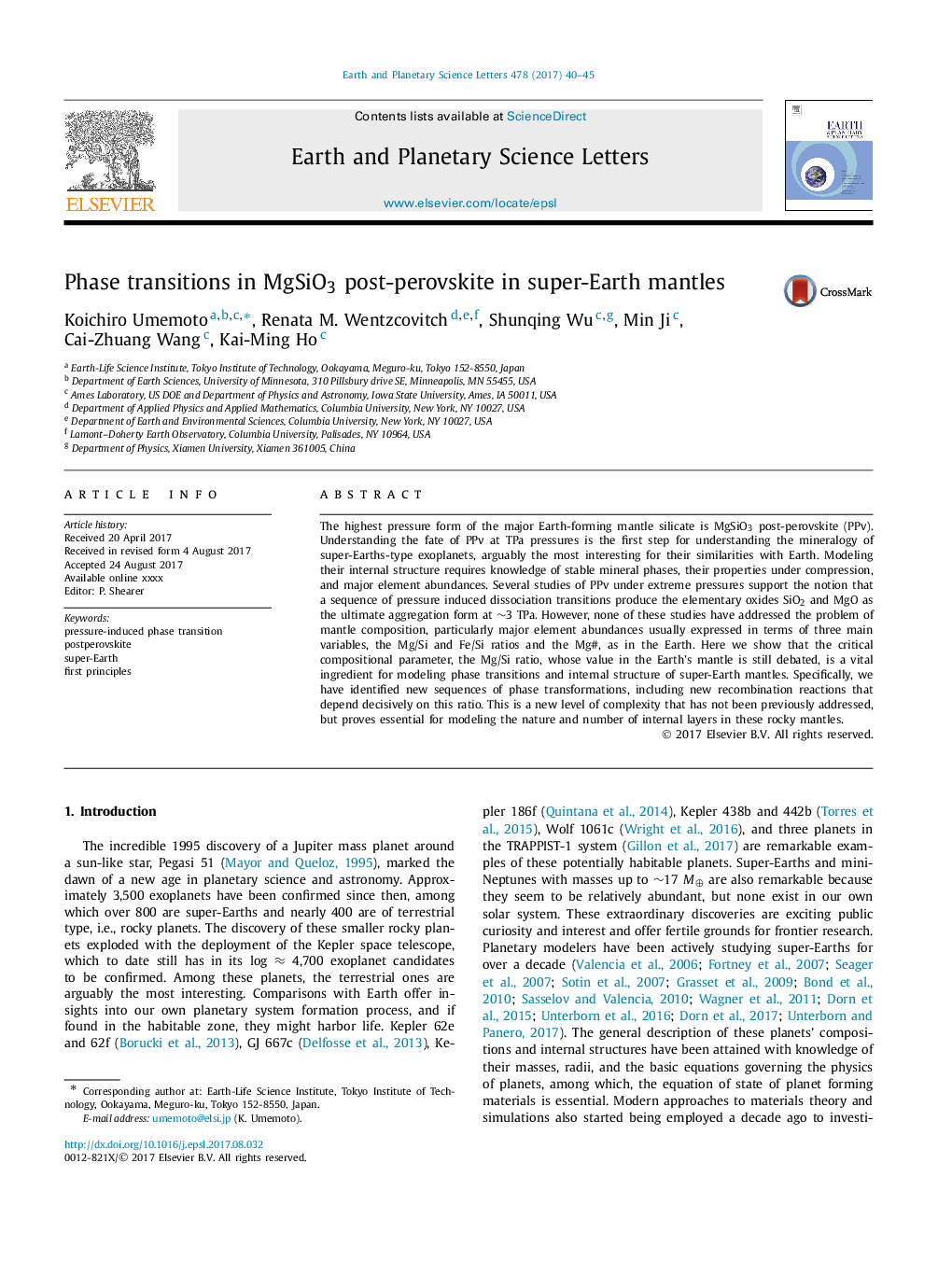| Article ID | Journal | Published Year | Pages | File Type |
|---|---|---|---|---|
| 5779553 | Earth and Planetary Science Letters | 2017 | 6 Pages |
Abstract
The highest pressure form of the major Earth-forming mantle silicate is MgSiO3 post-perovskite (PPv). Understanding the fate of PPv at TPa pressures is the first step for understanding the mineralogy of super-Earths-type exoplanets, arguably the most interesting for their similarities with Earth. Modeling their internal structure requires knowledge of stable mineral phases, their properties under compression, and major element abundances. Several studies of PPv under extreme pressures support the notion that a sequence of pressure induced dissociation transitions produce the elementary oxides SiO2 and MgO as the ultimate aggregation form at â¼3 TPa. However, none of these studies have addressed the problem of mantle composition, particularly major element abundances usually expressed in terms of three main variables, the Mg/Si and Fe/Si ratios and the Mg#, as in the Earth. Here we show that the critical compositional parameter, the Mg/Si ratio, whose value in the Earth's mantle is still debated, is a vital ingredient for modeling phase transitions and internal structure of super-Earth mantles. Specifically, we have identified new sequences of phase transformations, including new recombination reactions that depend decisively on this ratio. This is a new level of complexity that has not been previously addressed, but proves essential for modeling the nature and number of internal layers in these rocky mantles.
Related Topics
Physical Sciences and Engineering
Earth and Planetary Sciences
Earth and Planetary Sciences (General)
Authors
Koichiro Umemoto, Renata M. Wentzcovitch, Shunqing Wu, Min Ji, Cai-Zhuang Wang, Kai-Ming Ho,
